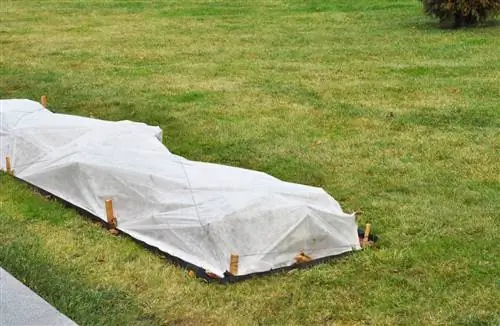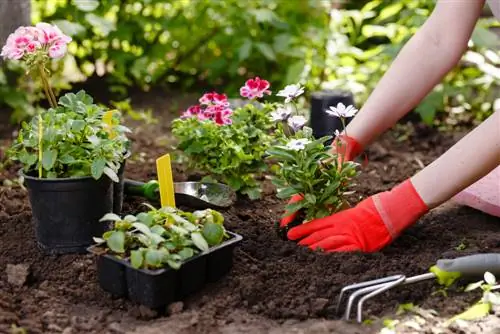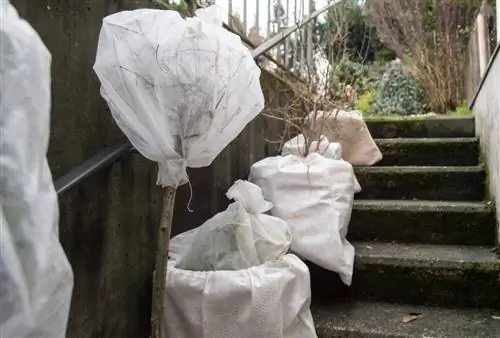- Author admin [email protected].
- Public 2023-12-16 16:46.
- Last modified 2025-01-23 11:21.
According to an old farmer's rule, the garden is winterized by October 21st at the latest. Depending on the weather, however, the relevant work must be brought forward - for example, when it comes to moving frost-sensitive plants to their winter quarters in good time or planting the bulbs of spring bloomers.

How do you winterize a flower bed?
To make a flower bed winter-proof, you should cut back shrubs and trees, remove dead flowers, pull out annual flowers, pile up roses, pack standard roses, dig up frost-sensitive flower bulbs and cover the ground with leaves, brushwood or bark mulch.
The most important works in autumn
In autumn there is a lot to do in the garden, and the flower bed is no exception. If the perennials and shrubs in it are hardy, you should definitely carry out the following work between September and October:
- Pruning shrubs and trees
- Remove dead flowers and, if necessary, seed heads
- pulling out annual flowers
- pile up roses
- Pack standard roses
- Dig up frost-sensitive flower bulbs (e.g. dahlias)
- overwinter these frost-free (e.g. in the cellar)
- Dig in bulbs of spring bloomers (e.g. tulips)
Early autumn is also the right time to plant new perennials and trees in the flower bed.
Cover flower bed
Once this work has been done, it is best to loosen the soil in the flower bed a little again. However, do this carefully so as not to damage any roots. Then cover the ground to protect the roots of the plants from frost. Leaves are particularly suitable for this, but also brushwood, grass clippings, straw or bark mulch. In particular, it is better not to remove autumn leaves that have fallen into the bed - for example from neighboring trees - as they are a natural winter protection. Plants that are not 100% hardy should be packed accordingly, for example in garden fleece (€6.00 on Amazon) or in a jute bag filled with straw.
Put frost-sensitive plants into winter quarters
You can now dig up plants that are not hardy or sensitive to frost and pot them in a planter. These plants usually overwinter better in cool, but frost-free conditions. In any case, pot culture is more recommended here, as you can simply save yourself and the plants the stress of transplanting. If you don't want to put planters in your flower bed, you can put the pots in the ground over the summer and then simply dig them up again in the fall without damaging the roots.
Tip
You should not cut back wilted perennials because the old leaves protect the plants from frost and help them survive the cold season. The necessary pruning takes place before budding in spring.






